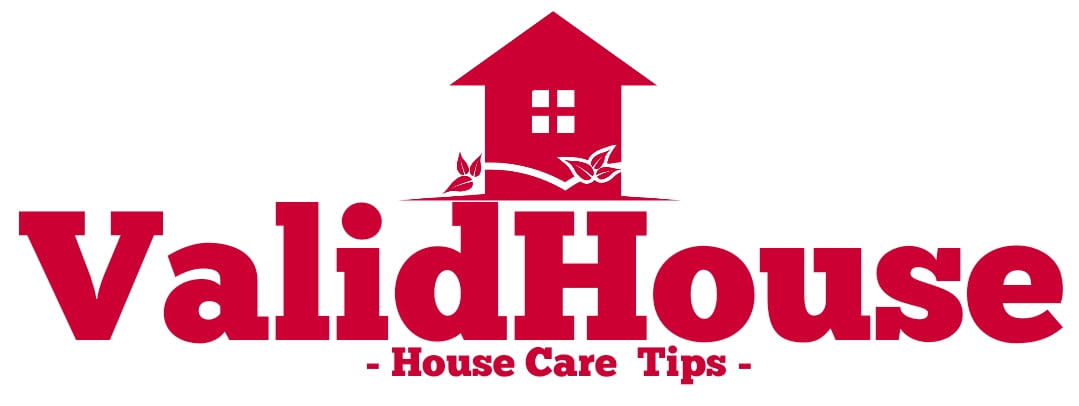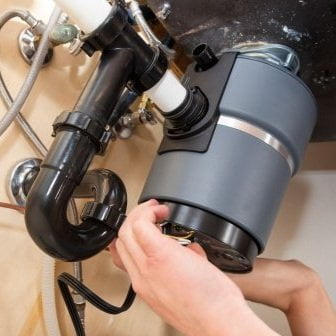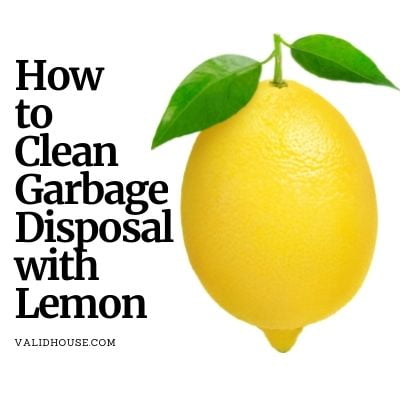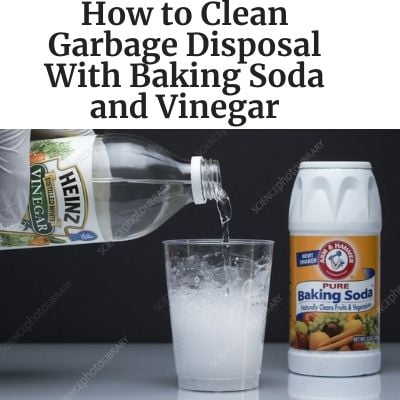Garbage disposals are important appliances needed in every household. Primarily for grinding up food waste when fitted to a kitchen sink, garbage disposals help in processing waste.
Oftentimes, food waste washed down the sink gets stuck in the disposal and there is a clog. You are rinsing some dishes in the sink and the water does not drain, it keeps rising.
There is something in the disposal that has caused the clog. What do you do next? A drain cleaner comes to mind. Drain cleaners are chemical products used to unclog drains or unblock pipes. So, can you put drain cleaner in a garbage disposal?
Yes, you can put drain cleaner in garbage disposal but it should be noted that not all drain cleaners are safe for use in a garbage disposal. Use drain cleaners with fewer chemical components to avoid damaging the garbage disposal.
Manufacturers of drain cleaners tell us those drain cleaners are made to disintegrate any blockage in the pipes or garbage disposal. That is partially true. Why do I say so?
Drain cleaners are made using strong chemicals that have been shown to damage the interior lining of the pipes slowly.
Therefore, putting drain cleaners in garbage disposal may affect the disposal in no time. The damage increases with more use of the chemicals, significant damage to the pipes will make the pipes break.
Table of Contents
What are Drain Cleaners?
Drain Cleaners could refer to a chemical product or a human being who performs drain cleaning. In this context, we refer to the chemical product.
According to www.wikipedia.com, drain cleaners are chemical products that unclog clogged drains or pipes. These products are formulated to disintegrate food substances, human waste, or solid particles that clog kitchen sinks or other drains.
Drain cleaners come in different forms: powders and liquids. Liquid drain cleaners are increasingly growing in popularity today. It can be poured directly into the drain.
In simple terms, the chemical drain cleaner and the chemical-free drain cleaner are the two forms of drain cleaners in use today. The former is more popular than the latter.
Types of Drain Cleaners
Different drain cleaners are suitable for different types of clogs with respect to impact. A slow-draining sink will require a different drain cleaner than a completely blocked sink.
There are three general types of liquid/powder drain cleaners: Acidic, Caustic, and Enzymatic.
A chemical drain cleaner is more effective but it can cause damage to the pipes compared to chemical-free drain cleaners.
Different drain cleaners are listed here:
- Drano Max Gel Drain Clog Remover and Cleaner
- XionLab Safer, Greener Drain Opener
- FlexiSnake Drain Weasel Sink Snake Cleaner
- Thrift Odorless Drain Cleaner
- Tubshroom
- Bio-Clean
- Forlivese 5-in-1 Sink Snake Cleaner
- Rigid K-6P Toilet Auger Snake
- Liquid-Plumr Clog Remover
- Rejuvenate Disposer & Pipe Cleaner
- Vastar 3 Pack 19.6 Inch Drain Snake
- CLR Clear Pipes & Drains
- Green Gobbler Drain Clog Remover
Can You Put Drain Cleaner in a Garbage Disposal?
Drain cleaners are safe to use in garbage disposal depending on the content of the products. Drain cleaners are suitable for disintegrating the worst garbage clogs.
The main component of many drain cleaners is Sodium Hydroxide. Sodium Hydroxide emits heat when it comes in contact with water, therefore it will react dangerously with other chemicals.
It is important to note that bleach or substances that contain Ammonia should be avoided when using drain cleaners.
Will Drain Cleaners Damage Garbage Disposal?
A lot of plumbers are not in support of liquid drain cleaners used to handle drain issues. As stated above, the moment a liquid drain cleaner is in contact with water, the reaction is a sharp rise in the temperature of the drain cleaner.
This increase in temperature can cause cracks and even worse, breaks in the lining of the pipes. So preferably, other drain cleaners that do not contain Sodium Hydroxide or bleach can be used to unclog drains.
Drain cleaners are composed of chemicals that can explosively damage the metals and plastics in a garbage disposal system. They emit dangerous fumes when mixed with certain chemicals.
Rubber seals are used in assembling garbage disposals to prevent leakage. These seals can be damaged, destroyed, or permanently weakened by the heat caused by using drain cleaners. This usually results in a bottom leakage of the garbage disposals.
Furthermore, drain cleaners can burn your skin. The chemical, sodium hydroxide is a very powerful mixture that can cause damage to the skin.
Drain cleaners might produce the immediate result you want but the long-term effect is unwanted.
What are the Right Ways to Clear Garbage Disposals?
Clogged or blocked garbage disposal is not a new occurrence. It happens when stuff that is not meant to be put in it is put in it.
Things like banana peels, coffee grounds, potato skin/peels, onion layers, eggshells, meat, bread, animal bones, vegetables, pasta, nuts, fibrous or stringy food like celery, asparagus, rhubarb, etc. oatmeal, pumpkin, corn husks, fruit seeds, grease, oil, and fat.
Anything that is not a food object including paper, wires, towels, clothes, and tissues should not be put in a garbage disposal.
Listed below are some ways to clear garbage disposals:
1. Make Use of a Kitchen Plunger
Plungers are designed to unclog sinks, provided the appropriate method is used. Endeavor to make use of a kitchen plunger and not a toilet plunger.
This is not just for sanitary reasons alone but a kitchen plunger is different in size from a toilet plunger and more effective for the job.
To plunge effectively, run some water into the sink, and make sure it is enough to fill the cup of the plunger. Begin to plunge gently for some seconds then more aggressive force should be applied after a few minutes, without lifting the plunger. Finally, lift the plunger to see if the water is now draining. This means you can plunge garbage disposal.
2. Make Use of a Tong
When a clog is observed in a garbage disposal, a glance should be taken into the unit to see what’s causing the clog.
This can be done with the aid of a flashlight. If the materials are visible from the top, pliers and tongs can be inserted inside the unit to retrieve the items. This process should be repeated until every item inside the disposal is removed.
3. Baking Soda, Vinegar, and Hot Water
This is a natural remedy for clogged disposals. It also has no negative effects on the unit. Baking soda and vinegar can clear many clogged disposals effectively.
When mixed together, baking soda and vinegar produce a fizzing reaction. This reaction can disintegrate most clogs.
Therefore, use baking soda, vinegar, and hot water to clear garbage disposal:
- Drain any stagnant water in the sink, this can be done through scooping.
- Pour baking soda into the garbage disposal
- Follow it by pouring vinegar into the disposal
- Wait for a minimum of 20 minutes
- Afterward, hot water should be poured into the disposal to wash down the food and other waste items.
4. Call a Plumber
This is a more expensive method but it will get the problem solved. Plumbers are suited for the job and they will do an effective job. If needed, a plumbing expert can uninstall the disposal unit to remove stubborn clogs and put it back together.
Conclusion
Drain cleaners are employed as a quick means of unclogging garbage disposals but they come with negative effects in the long term. Slowly but surely, these cleaners will damage the pipes of the disposal unit and lead to damage to the sink. Drain Cleaners should be used sparingly to avoid damage to the garbage disposals.









